by Janice Gammon | Nov 19, 2019
The world of Byways changed on September 22, 2019 when “Reviving America’s Scenic Byways Act of 2019” was signed into law. It passed out of the U.S House of Representatives on a vote of 404-19 earlier this year and then was passed unanimously in the Senate. The President signed it on 9/22/19. The bill directs the U.S. Secretary of Transportation to restart the nomination process for National Scenic Byway status within 90 days of enactment, and to make a round of designations within one year.We are very grateful to Sen. Susan Collins (R-ME) and Sen. Ben Cardin (D-MD) for their leadership on the bill in the Senate and to Rep. David Cicilline (D-RI) and Rep. Garret Graves (R-LA) for their leadership in the House. See what other groups have to say about the passage of this bill and what it means for America at https://www.scenic.org/blog/president-signs-national-scenic-byways-bill-into-law/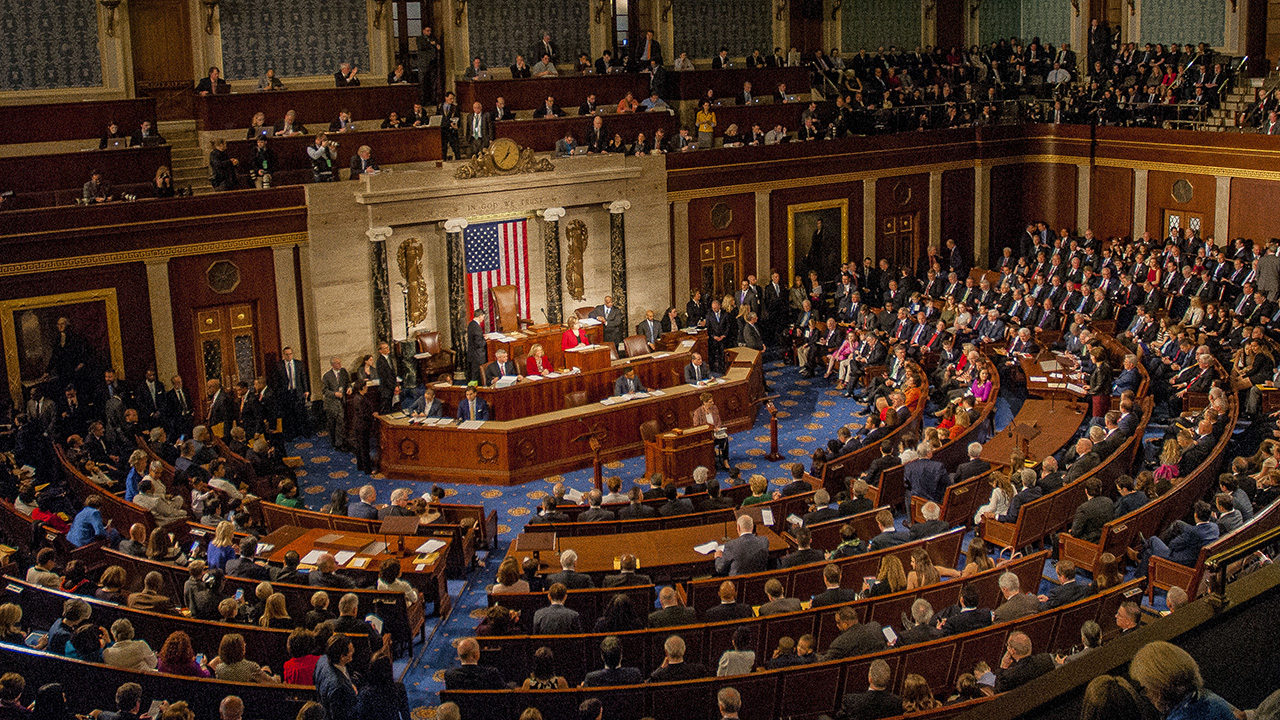
We, at the Lincoln Highway Heritage Byway, are patiently waiting to see what the guidelines and nomination requirements are for this re-energized program. Only in Illinois is the Lincoln Highway a National Scenic Byway. The route in the states of Nebraska, Iowa, Indiana, Ohio, and half of Pennsylvania are state byways. The other states (New York, New Jersey, West Virginia, Wyoming, Utah, Nevada, and California) have not designated their portion of the historic route as a byway. One must first be a state byway before becoming a national byway.
In Iowa, we have two National Scenic Byways- the Loess Hills National Scenic Byway and the Great River Road National Scenic Byway. The Loess Hills runs along the western edge of the state and the Great River Road is along the Mississippi River on the eastern edge of Iowa. The Lincoln Highway connects to both of them.
Now keep in mind that no funding was attached to this bill. This is only to take nominations and approve byways for this distinction. That does not mean that funding couldn’t happen in the future, but it was not part of this bill.
A Corridor Management Plan has been a requirement in the past. We completed ours in late 2016 and have been working hard to implement the projects identified in that process. Twenty interpretive panels in 8 communities have been created and we have plans for several more. The rou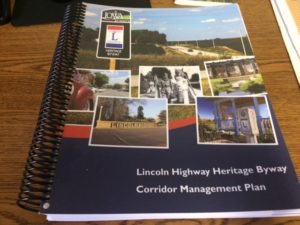 te has also been promoted in brochures, presentations, and at the Iowa State Fair. We have partnered with universities, government entities, other non-profits, and citizens to retain this historic road and its varied resources.
te has also been promoted in brochures, presentations, and at the Iowa State Fair. We have partnered with universities, government entities, other non-profits, and citizens to retain this historic road and its varied resources.
As we keep the momentum going, writing grants and planning projects, we desire to become a National Scenic Byway one day. We see the possibility on the horizon.
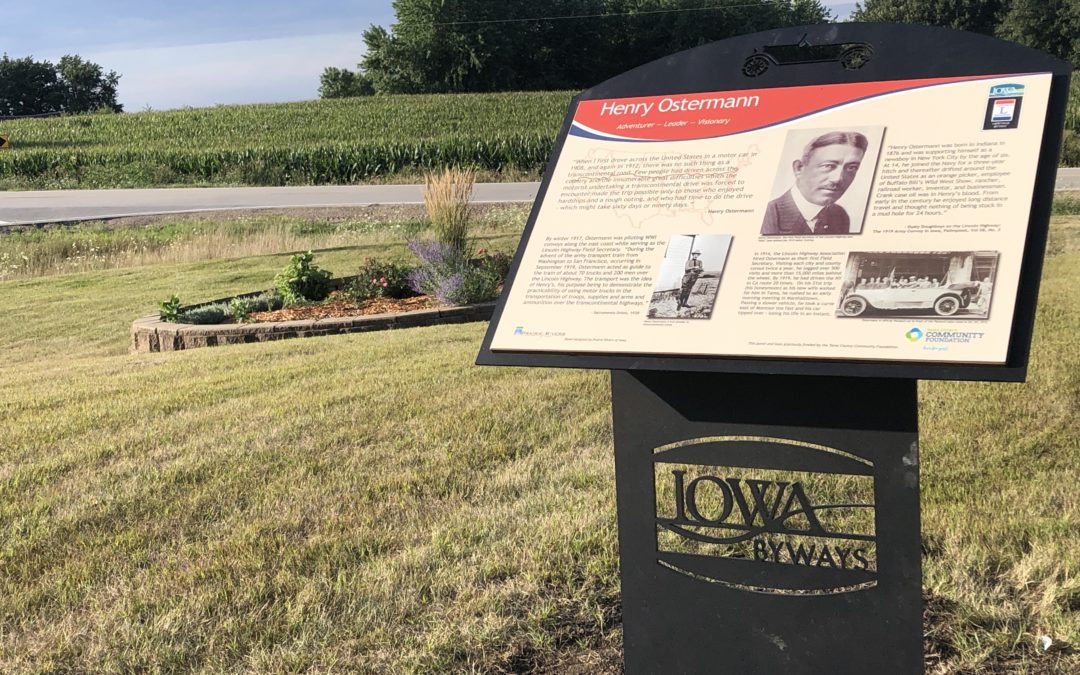
by Janice Gammon | Aug 27, 2019
Can summer really be over? It seems every year it goes faster and faster. We, here at the Byway office, seemed to have packed quite a bit into our last 3 months. Five communities celebrated 150 years this summer- Carroll, Dow City, Grand Junction, Scranton, and Westside. 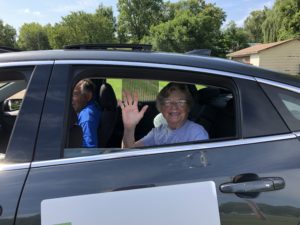 We entered a car into several of the parades and had Bob and Joyce Ausberger, Lincoln Highway Association members, help toss candy out to the crowd in Grand Junction. What a great way to share in the fun!
We entered a car into several of the parades and had Bob and Joyce Ausberger, Lincoln Highway Association members, help toss candy out to the crowd in Grand Junction. What a great way to share in the fun!
The Lincoln Highway Heritage Byway took 4 of the 11 days at the Iowa Byways booth under the grandstand at the Iowa State Fair (Aug 8-18) and talked to fair-goers about the unique Bywa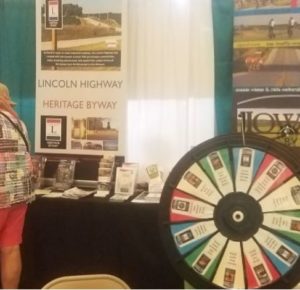 y routes in Iowa. We shared some history in a trivia spinning-wheel game. Everyone, of course, got a prize!
y routes in Iowa. We shared some history in a trivia spinning-wheel game. Everyone, of course, got a prize!
This year our new featured booklet at the fair was about the original 1919 Army Convoy, the Lincoln Highway, Henry Ostermann (the idea man behind the convoy and a man we have written about before), Dwight Eisenhower (who was on the original convoy)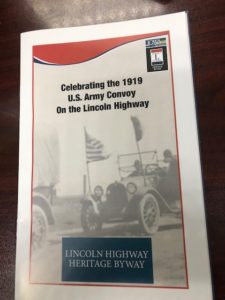 , and Dwight’s wife, Mamie, (who was born in Boone, Iowa). These booklets are available at some state Welcome Centers and select locations along the Byway route. And of course, you can always request copies from our office at jgammon@prrcd.org
, and Dwight’s wife, Mamie, (who was born in Boone, Iowa). These booklets are available at some state Welcome Centers and select locations along the Byway route. And of course, you can always request copies from our office at jgammon@prrcd.org
On August 15th, we unveiled an interpretive panel in the City of Montour’s Maple Hill Cemetery. This panel serves as a long overdue memorial to Henry Ostermann, who served the Lincoln Highway Association as their first Field Secretary and knew the road and the route better than anyone. He had been piloting convoys up and down the east coast in 1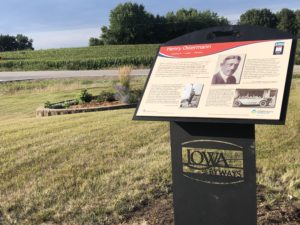 917 and came up with the idea to test men, equipment, and roads by taking a convoy across the nation- on the Lincoln Highway. His idea was a reality in 1919. In 1920, on his 21st trip across the nation (and his honeymoon), he lost his life in an accident east of Montour, near the cemetery. In the August-September 1920 Iowa Highway Commission Service Bulletin, the IHC called for a memorial to be placed near the accident site.
917 and came up with the idea to test men, equipment, and roads by taking a convoy across the nation- on the Lincoln Highway. His idea was a reality in 1919. In 1920, on his 21st trip across the nation (and his honeymoon), he lost his life in an accident east of Montour, near the cemetery. In the August-September 1920 Iowa Highway Commission Service Bulletin, the IHC called for a memorial to be placed near the accident site.
In 2019, it became a reality (99 years later). About 25 people gathered to witness this installation. A small program consisted of several speakers: Reed Riskedahl (Prairie Rivers of Iowa Board); Mary Preston (Iowa Lincoln Highway Association President); Dotti Thompson (Community Foundation of Northeast Iowa/Tama County Community Foundation); Rev. John Christianson (Living Faith Methodist Church of Montour), Sue Eberhart (Montour City Council); and Jan Gammon (Lincoln Highway Heritage Byway Coordinator). Gammon also reads words from Rep. Dean Fisher of Montour. Sue Eberhart and Vicky Garske, Montour City Council members, unveiled the panel for all to see. During the program, a few sprinkles fell from the sky. In retrospect, maybe it was Mr. Ostermann verifying his overdue acknowledgement.
A few days later, we celebrated Mr. Ostermann once again as the Military Vehicle Preservation Association (MVPA) retraced the route of the original 1919 Convoy. The original convoy traveled about 6 mph and this modern day group, with vintage vehicles, averaged 35 mph. There was a link to live tracking, so a person could fo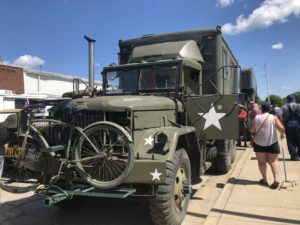 llow the convoy as it made its way across America. Our Byway staff caught up with the convoy in Belle Plaine, Iowa and then saw them again in Tama, Marshalltown, and Nevada. The convoy was impressed by the amount of people who came out to see them- whether on a city street or at the end of their rural lane. Byway staff had helped promote this event in Iowa- sending out press releases, sharing our booklet, and doing interviews with KROS Radio in Clinton and also with RadioIowa. We are most appreciative to the public for their response.
llow the convoy as it made its way across America. Our Byway staff caught up with the convoy in Belle Plaine, Iowa and then saw them again in Tama, Marshalltown, and Nevada. The convoy was impressed by the amount of people who came out to see them- whether on a city street or at the end of their rural lane. Byway staff had helped promote this event in Iowa- sending out press releases, sharing our booklet, and doing interviews with KROS Radio in Clinton and also with RadioIowa. We are most appreciative to the public for their response.
The Lincoln Highway Association will also bring a convoy of classic and contemporary cars, retracing the same route. They will be in Iowa September 6th and 7th, overnighting in Marshalltown and Council Bluffs. They will go a little faster!
Now with fall approaching, its time to regroup and look for funding for future projects. We have some already being planned, so stay tuned!
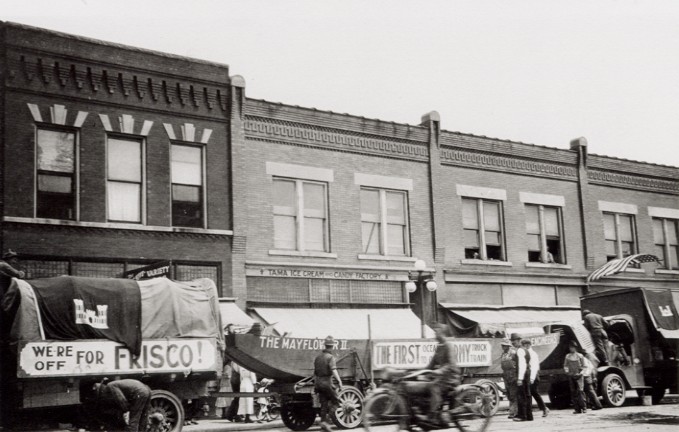
by Janice Gammon | May 23, 2019
One hundred years ago, in what began as the idea of one man, America was shown how motor trucks could transport troops, supplies, arms, and ammunition across the nation. This was known in 1919 as the First Trans-Continental Motor Transport Convoy.
The Idea and Development
Henry Ostermann, who we talked about in a previous writing, had been piloting convoys for the Army up and down the east coast in the winter of 1917, during World War I. He was also serving as Field Secretary for the Lincoln Highway Association and merged his two occupations into one idea for the convoy.
In “A Picture of Progress on the Lincoln Way”, published by The Lincoln Highway Association (LHA) in 1920, the LHA officers and the General Staff in Washington held a conference in June 1919 to discuss convoy details. The success of the run was due to the LHA supplying accurate data to the Army as a “result of its years of study of trans-continental highway conditions, and of the co-operation given to the Motor Transport Corps, not only by the Headquarters of the Lincoln Highway Association, but by the consular representatives all along the line between the two coasts. The spirit with which the undertaking was met by the general public and the highway officials at every point along the route, was also invaluable to the project.”

The 1919 Army Convoy taking a break in Tama, Iowa. LHA Archive, Transportation History Collection, Special Collections, University of Michigan
The Route and Key Personnel
On July 7, 1919, send-off ceremonies were attended by high ranking United States officials, including Secretary of War Baker; General Marsh, Chief of Staff; and many leading U.S. Senators and Representative. At the conclusion of the celebration, the convoy left from “Zero Milestone” near the south lawn of the White House in Washington, D.C.. A marker stands there yet today to commemorate this historic adventure undertaken by the Army. The convoy left from Washington and caught the Lincoln Highway at Gettysburg, Pennsylvania. (The Lincoln Highway actually begins in Times Square in New York.)
From the LHA, “The convoy, consisting of 72 vehicles, 65 of which were motor trucks of all types used by the Government during the war, with a personnel of 260 men and 35 officers as statisticians and observers for the various branches of service, under the command of Lt. Col. Charles B. McClure and Capt. Bernard McMahan, and led by Field Secretary and Vice-President H.C. Ostermann of the LHA, in the Association’s Packard, traversed the continent, covering a distance of 3310 miles from Washington to San Francisco, in sixty-two days, arriving only four days behind the schedule laid out in Washington before the start.”
A young Lt.Col. Dwight Eisenhower was one of the men on this trip. He caught up with the convoy at the first overnight location in Frederick. Maryland. He wrote about his experience and his report is on file at his Presidential Library and Museum in Abilene, Kansas. https://www.eisenhower.archives.gov.

Washing dust from a 1919 Army Convoy vehicle in Cedar Rapids. LHA Archives, Transportation History Collection, Special Collections Library, University of Michigan
What the Convoy Taught Us
Eisenhower found most of the drivers in need of additional training and, as with the rest of the convoy leaders, felt the nation’s roads to be lacking. In the Eastern United States, they were often paved but sometimes too narrow for the large equipment. West of Chicago, roads became graveled. Iowa was lucky because it had not rained which would have turned the unpaved road to “gumbo.” The “Seedling Mile,” a one mile of paved road in Linn County near Cedar Rapids, Marion, and Mount Vernon, was completed just prior to the Convoy. The group did not write about it much. As it was, the ground in Iowa was very dry and the convoy, according to the State Center Enterprise, stretched out for as much as 10 miles. Vehicles were kicking up quite a bit of dust and hindering the men and trucks following them. Nearly one hundred bridges were broken and repaired across the nation, though we have no record of any in Iowa. (Iowa was a leader in bridge building.)
This experience showed that America needed to improve roads and the federal government needed to step in with funding instead of leaving it to the locals and counties to build their own roads. How county secondary road departments, county engineers, Federal Highway Commission, and the Department of Transportation developed is a story all its own- which we will address in a later writing.

1919 Motor Convoy crossing the Lincoln Highway Bridge in Tama, Iowa. LHA Archives, Transportation History Collection, Special Collections Library, University of Michigan

What could have happened in Iowa if it had rained! LHA Archives, Transportation History Collection, Special Collections Library, University of Michigan
Celebrating the Convoy 100 Years Later
This one idea from one man helped change the course of transportation. This year, in 2019, we will celebrate the convoy as the Military Vehicle Preservation Association (MVPA) travels the same route, from Washington, D.C. to San Francisco, and will overnight in Iowa- DeWitt (Aug 22), Marshalltown (Aug 23), and Denison (Aug 24). The MVPA call their convoy the “longest Veteran’s parade in the nation.”
The Lincoln Highway Association will also celebrate with their own D.C.-to-San Francisco convoy and overnight in Marshalltown (Sept 6) and Council Bluffs (Sept 7). Be sure to line the route and wave either flags or hands (or both) to the convoys as they come through your neck of the woods.
by Janice Gammon | Sep 8, 2015
The Lincoln Highway Heritage Byway is a little over halfway through our 3-year process to create a new Corridor Management Plan for the Byway. The Byway travels through 13 counties and 43 communities in the central part of Iowa. By holding community input meetings in each county, we have included residents in this process. We have asked them to consider the 6 intrinsic qualities that make a Byway: historical, cultural, natural, scenic, recreational, and archaeological. What did they have in their community, what do they currently have in their community and what do they wish to see in their community in relation to these qualities?
Historical is the most prominent quality of the Lincoln Highway. In Iowa, the train came through first and the Lincoln Highway followed the rail line going east and west across the state. They had already found, through trial and tribulations, the driest and flattest areas to lay their tracks and the best places build bridges to cross rivers and streams. Iowa was known for its MUD and the road we take for granted now, did not exist. Road improvements took some time and many conversations were held as to who should maintain and eventually pave main roads. Some felt it was a local responsibility, some felt it was a county’s, and some felt it should be the state’s. Today we see all of these variations depending on what type of road it has become. (Some “loops” of the original route are still gravel!) The Lincoln Highway, itself, is historical, but so are some of the bridges and buildings along the route in the counties the Highway travels through.
Iowans are people from many different cultures. The Meskwaki Nation settled in Iowa after the Louisiana Purchase opened up the territory. Other settlers moved westward and whole towns could be made up of German, Norwegian or Czech immigrants- just to name a few. All along the Byway, each town holds some kind of a summer celebration and offers up their special local foods and shares their customs and uniqueness with visitors.
Some might say Iowa is not that scenic or have many natural features, but just travel the Lincoln Highway and see the changes in the landscape! The Lincoln Highway crosses two major rivers – the Mississippi and Missouri, and other larger rivers- the Cedar, Iowa, Des Moines, and Boyer and some smaller rivers and streams- the Wapsipinicon, Skunk, North Raccoon, Squaw Creek and Indian Creek, to name a few. Iowa might not have mountains, but the Loess Hills along the Missouri River or the Bohemian Alps, as the locals call them, to the east of Tama, sure show Iowa’s change in elevation. The M and M Divide outside of Carroll has rivers to the east traveling southeast to eventually flow into the the Mississippi and the rivers to the west, traveling southwest flowing into the Missouri River.
Along these rivers, streams, hills, wetlands, prairie potholes, and restored prairies there is a wide variety of recreational opportunities. Visitors and residents can bird watch, canoe, water ski, downhill ski, ice fish, hike, and hunting and fish. There are bike trails, horse trails, off-road vehicle trails, and walking trails.
The State Office of Archaeology has been a great resource for important digs along the Byway. Most sites are kept confidential, but much of Iowa has documented evidence that cultures living here long ago left proof of their existence. As new roads are built and riverbanks are cut away due to flooding and flow of water, new artifacts are bound to be uncovered.
Using all of the information collected in the community meetings and from other sources, we will develop a plan to preserve, restore, and create new opportunities for the communities along the Byway to develop and grow. At its inception from Times Square to San Francisco, the Lincoln Highway was a way for “common” folks to purchase a car and travel from town to town, county to county, state to state, and see America. The traveler needed to find amenities in each community whether it be a gas station, car repair shop, restaurant, hotel/motel, or campground. This brought economic development to these communities and it was a great honor to be named as a town along the route. Over time, perhaps a newer bridge was built or a road was improved and that caused the route to be moved slightly and those have been developed into “loops”. But for the most part, the route has stayed within the original communities on the proclamation route. How can we measure the impact the Byway has on these 43 communities?
One way is through the Economic Impact study we are conducting as a baseline to determine what impact the Byway has on its Corridor today. Visitor surveys are in 11 locations along the Byway: Sawmill Museum in Clinton, Lincoln Cafe and Wine Bar in Mount Vernon, Belle Plaine Museum in Belle Plaine, King Tower in Tama, John Ernest Vineyard and Winery outside of Tama, Reed- Niland Cafe in Colo, Greene County LHA Museum in Grand Junction, Mahanay Bell Tower in Jefferson, Cronk’s in Denison, Harrison County Welcome Center in Missouri Valley, and the Union Pacific Museum in Council Bluffs. If you are out traveling along the Byway and are 25 miles from your residence, stop into one of these locations and fill out a survey.
The plan is to gather this information and develop it into a working document next year. In the meantime, we welcome comments, concerns, or general stories you might have about the Lincoln Highway Heritage Byway. Comment on this blog or contact Jan Gammon, Lincoln Highway Heritage Byway coordinator, at jgammon@prrcd.org.

 te has also been promoted in brochures, presentations, and at the Iowa State Fair. We have partnered with universities, government entities, other non-profits, and citizens to retain this historic road and its varied resources.
te has also been promoted in brochures, presentations, and at the Iowa State Fair. We have partnered with universities, government entities, other non-profits, and citizens to retain this historic road and its varied resources.










